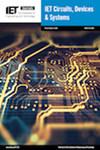The swift progression of electric vehicles (EVs) presents significant prospects for the enhanced integration of sustainable energy in the automotive industry. The installation technique and cost-effectiveness of on-board chargers (OBCs) have contributed to their increasing popularity as a feasible option for EVs. Moreover, there exists a growing demand within the automotive sector regarding bidirectional power flow solutions owing to the capacity of EVs to supply electricity to the electrical network. A crucial and integral component of the OBC is the dual active bridge (DAB) (an isolated bidirectional direct current [DC]–DC converter) satisfying the bidirectional power flow. The key aim of this work is to emphasize the essential role of the DAB within the realm of power electronic converters utilized in EVs. This paper introduces an analytical methodology for evaluating power losses and energy efficiency in a single-phase DAB. The validity of this approach is determined through a comparison between the computed energy efficiency and the empirical data obtained from a closed loop PI controlled 2.6 kW DAB model. The research article furthermore presents an analysis of leakage inductance on the efficiency and phase shift saturation in the empirical model. Subsequent comparative study evaluates the key properties of the paper, such as overall efficiency and settling time, across different loads. This inquiry offers valuable insights into the actual performance of these systems by a comparative analysis of simulation findings and real-world data obtained from hardware-based experiments.



